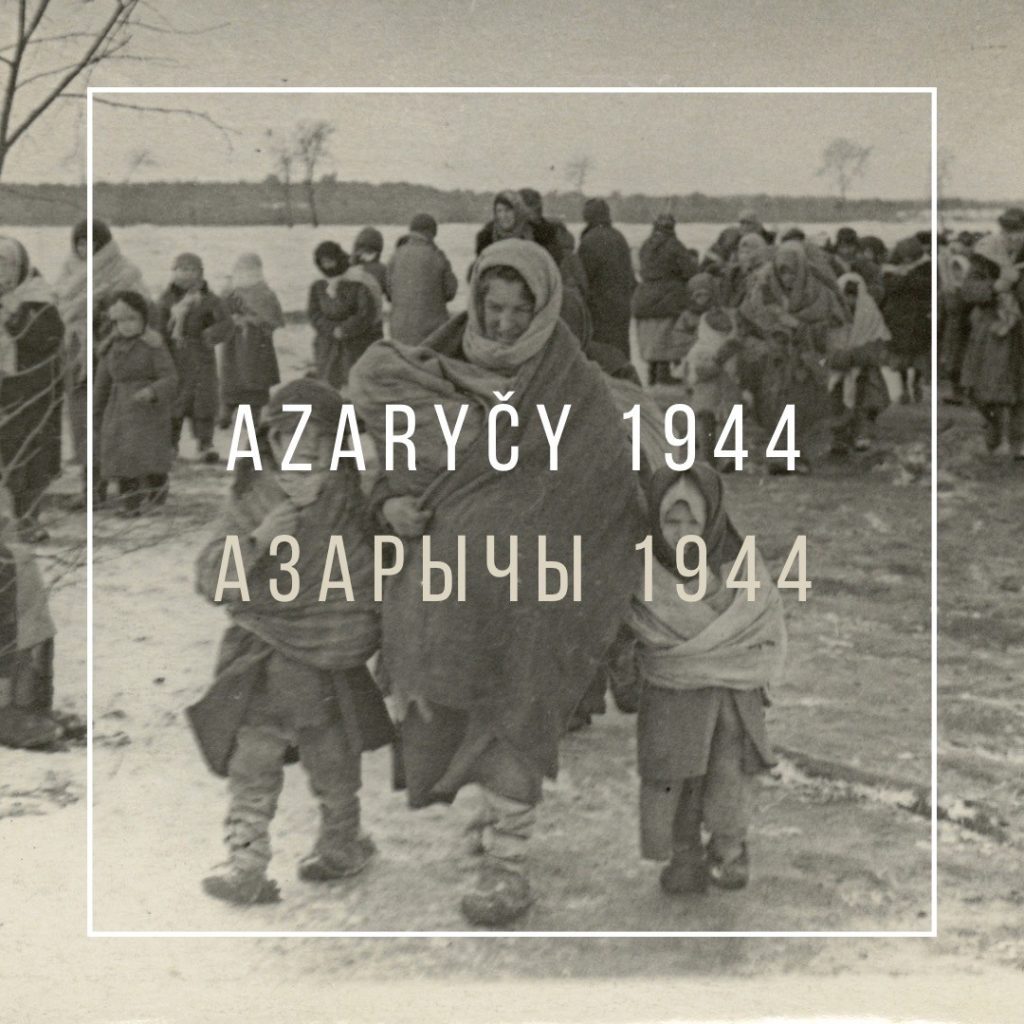Navid Kermani, a freelance author from Cologne, reports in his 2018 travel diary “Entlang den Gräben. Eine Reise durch das östliche Europa bis nach Isfahan” about his experiences during his research travels, which took him to Eastern Europe and the Middle East in 2016/17 on behalf of the German news magazine Der Spiegel. In Belarus, his journey also took him past the memorial site in Azaryčy. His subsequent account of this encounter shows how the memorial site has now been integrated into the everyday life of the local population. At the same time, the concluding sentence reveals how difficult it is for post-war generations to understand what happened under the German occupation during the Second World War:
„Auf dem Rückweg biegen wir an einem der Schilder ab, die auf eine Gedenkstätte verweisen: Das Lager von Osaritschi existierte nur eine Woche und bestand aus nichts als einem sumpfigen Wald, der mit einem Stacheldrahtzaun, Wachtürmen und Minen abgesperrt war. Auf dem kleinen Parkplatz steht ein Auto mit weit geöffneten Türen und laut aufgedrehtem Techno […]. Als wir daneben parken, schleicht ein Liebespaar aus dem Gebüsch, schaltet die Musik aus und fährt mit schüchternen Minen davon. Ein paar Meter hinter dem Denkmal, an das bunte Plastikkränze gelehnt sind, ist noch der Zaun zu sehen und hinterm Zaun der Sumpf, in dem die Wehrmacht bei ihrem Rückzug siebzigtausend Menschen zusammenpferchte, die nicht für den Arbeitsdienst taugten, also vor allem Alte, Kranke und Kinder – ohne Unterschlupf, ohne sanitäre Anlagen, ohne Essen und nur mit Schnee als Trinkwasser. […] Ich versuche mir vorzustellen, was sich zwischen dem 12. und 17. März 1944 hinter dem Zaun ereignete, aber sehe nur den Sumpf.“1 (German original)
“On the way back, we turn off at one of the signs pointing to a memorial site: The Azaryčy camp existed for only one week and consisted of nothing but a swampy forest enclosed with barbed wire, watchtowers, and mines. In the small parking lot, there is a car with its doors wide open and blasting techno music […]. As we park next to it, a couple sneaks out of the bushes, turns off the music, and drives away with embarrassed looks on their faces. A few meters behind the monument, against which colorful plastic wreaths are leaning, the fence is still visible, and behind the fence is the swamp where the Wehrmacht, during their retreat, crammed seventy thousand people who were unfit for labor service, especially the elderly, the sick, and children – without shelter, without sanitary facilities, without food, and with only snow for drinking water. […] I try to imagine what happened behind the fence between March 12 and March 17, 1944, but I see only the swamp.” (Translation of the German original)
- Kermani, Navid: Entlang der Gräben. Eine Reise durch das östliche Europa bis nach Isfahan, München 2018, p. 82f. ↩︎

